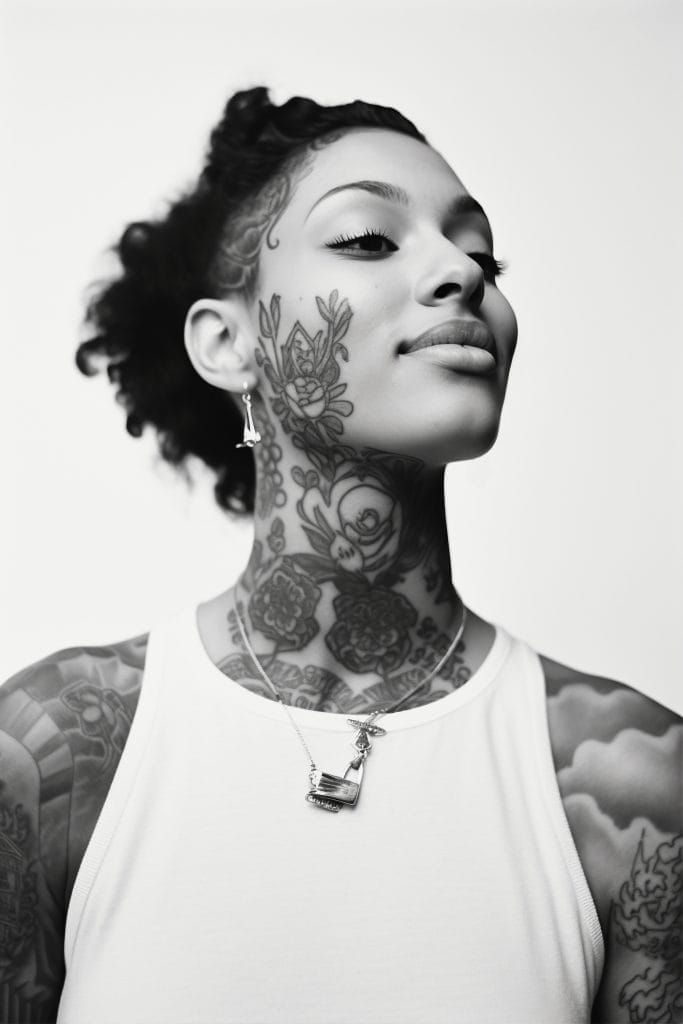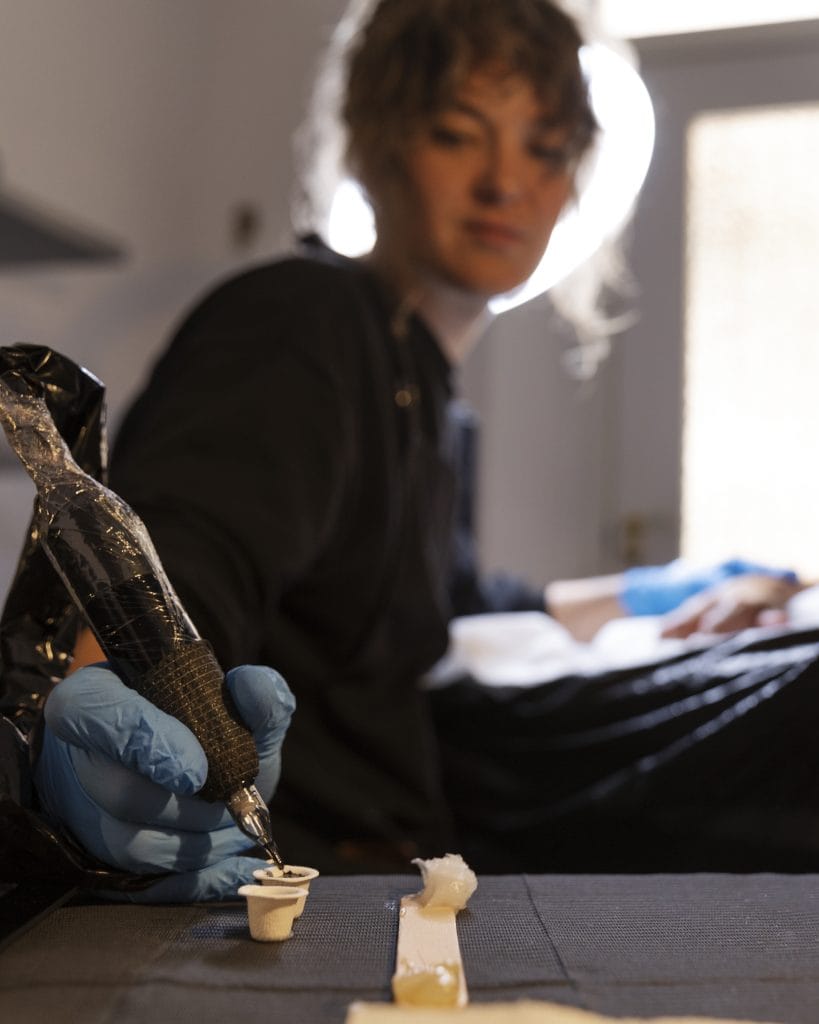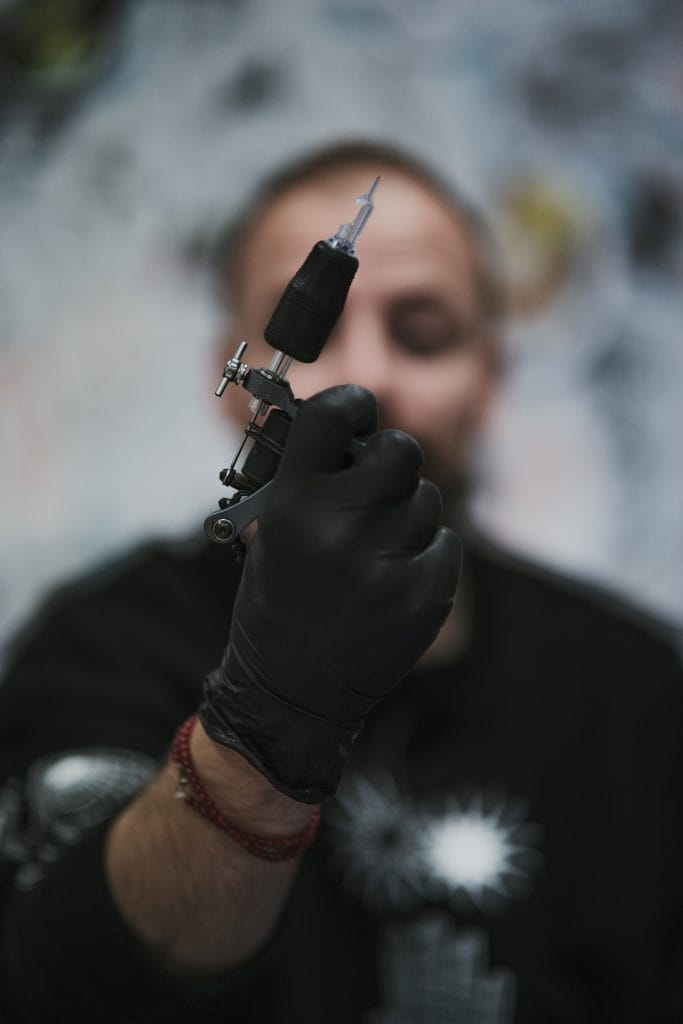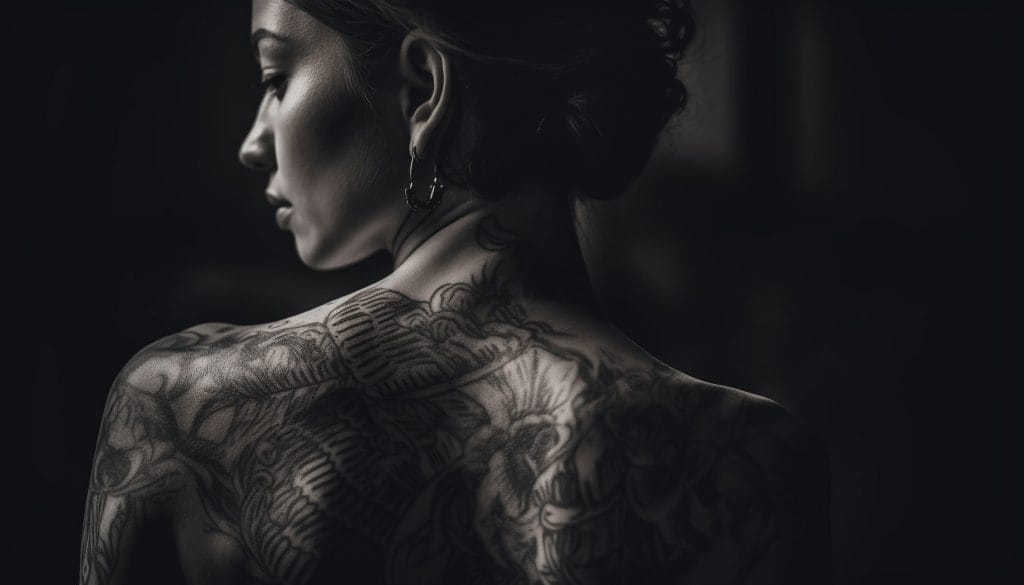Tattooing darker skin tones presents unique challenges that both artists and clients must navigate. One of the primary concerns is the visibility of the ink once it is applied. Darker skin can absorb certain colors differently, which may lead to a tattoo that appears muted or less vibrant than intended.
This phenomenon occurs because the melanin in darker skin can affect how colors are perceived, making it essential for artists to have a deep understanding of color theory and how various pigments interact with different skin tones. Additionally, the healing process can vary significantly, as darker skin may be more prone to hyperpigmentation or keloid formation, which can alter the appearance of a tattoo over time. Moreover, the technique employed during the tattooing process can also impact the final result.
Artists must be adept at adjusting their needle depth and speed to accommodate the unique characteristics of darker skin. This requires not only skill but also experience and a keen eye for detail. Understanding these challenges is crucial for both tattoo artists and clients, as it sets the foundation for a successful tattoo experience.
By acknowledging these factors, clients can make informed decisions about their tattoo designs and artists, ensuring that they achieve the desired outcome.
Key Takeaways
- Understanding the Challenges of Tattooing Darker Skin Tones:
- Darker skin tones may require different techniques and color choices for tattoos to show up vibrantly.
- Tattooing on darker skin tones may require more skill and experience due to the potential for ink to blend in with the skin.
- Color Choices for Tattooing Darker Skin Tones:
- Bright and bold colors such as red, yellow, and orange tend to show up well on darker skin tones.
- Consider using lighter shades or pastel colors to create contrast and visibility on darker skin tones.
- Techniques for Tattooing Darker Skin Tones:
- Tattoo artists may need to use a different approach, such as layering and building up colors, to ensure the tattoo stands out on darker skin tones.
- Paying attention to the skin’s undertones and using proper lighting can help achieve the desired tattoo results on darker skin tones.
- Importance of Proper Aftercare for Tattoos on Darker Skin Tones:
- Proper aftercare is crucial for all tattoos, but it is especially important for tattoos on darker skin tones to ensure the colors remain vibrant and the skin heals well.
- Following the tattoo artist’s aftercare instructions, such as keeping the tattoo moisturized and protected from the sun, is essential for maintaining the tattoo’s appearance on darker skin tones.
- Common Misconceptions about Tattooing Darker Skin Tones:
- One common misconception is that tattoos won’t show up well on darker skin tones, but with the right techniques and color choices, vibrant tattoos can be achieved.
- Another misconception is that all tattoo artists are experienced in tattooing darker skin tones, highlighting the importance of finding a skilled and knowledgeable artist.
Color Choices for Tattooing Darker Skin Tones
When it comes to selecting colors for tattoos on darker skin tones, careful consideration is paramount. While some colors may appear vibrant on lighter skin, they can become muted or even invisible on darker complexions. For instance, pastel shades and lighter hues may not stand out as effectively, leading to a tattoo that lacks the intended impact.
Instead, bolder colors such as deep reds, blues, and greens tend to show up more vividly against darker skin. These rich tones can create striking contrasts that enhance the overall design and ensure that the tattoo remains visually appealing over time. In addition to bold colors, incorporating black ink can also play a significant role in tattoo designs for darker skin tones.
Black ink not only provides a strong outline but can also be used creatively within the design to add depth and dimension. Artists often recommend using a combination of black and vibrant colors to create a balanced and eye-catching tattoo. Ultimately, the choice of colors should align with the client’s vision while taking into account how those colors will interact with their skin tone.
A knowledgeable artist will guide clients through this process, helping them select shades that will not only look great initially but will also age well.

Techniques for Tattooing Darker Skin Tones
The techniques employed in tattooing darker skin tones are crucial for achieving optimal results. One effective method is to use a slower hand speed and a shallower needle depth during the tattooing process. This approach allows for better ink saturation and minimizes the risk of trauma to the skin, which can lead to complications such as scarring or uneven healing.
Additionally, artists may choose to use specific needle configurations that are better suited for darker skin, ensuring that the ink is deposited evenly and effectively. Another important technique involves layering colors strategically. By applying multiple layers of ink, artists can create a more dynamic and visually appealing tattoo that stands out against darker skin.
This technique not only enhances color vibrancy but also allows for greater detail in intricate designs. Furthermore, artists may utilize shading techniques that take into account the natural undertones of the client’s skin, ensuring that the final result is harmonious and aesthetically pleasing. Mastery of these techniques is essential for any artist looking to work with darker skin tones, as it directly impacts the quality and longevity of the tattoo.
Importance of Proper Aftercare for Tattoos on Darker Skin Tones
Proper aftercare is vital for all tattoos, but it holds particular significance for those on darker skin tones. The healing process can vary widely among individuals, and darker skin may be more susceptible to issues such as hyperpigmentation or keloid formation if not cared for correctly. Following the artist’s aftercare instructions diligently is essential to ensure that the tattoo heals properly and maintains its intended appearance.
This often includes keeping the tattoo clean, moisturized, and protected from sun exposure during the healing phase. Additionally, clients with darker skin should be aware of how their skin type may influence aftercare practices. For instance, using products that are too harsh or contain irritants can exacerbate healing issues.
It is advisable to opt for gentle, fragrance-free moisturizers that promote healing without causing irritation. Regularly monitoring the tattoo during the healing process is also crucial; any signs of unusual redness or swelling should prompt a consultation with a healthcare professional or the tattoo artist. By prioritizing aftercare, clients can help ensure that their tattoos remain vibrant and beautiful for years to come.
Common Misconceptions about Tattooing Darker Skin Tones
There are several misconceptions surrounding tattooing darker skin tones that can lead to misunderstandings between clients and artists. One prevalent myth is that all colors will look good on darker skin; however, as previously mentioned, certain shades may not show up as vibrantly as others. This misconception can result in disappointment when clients expect their tattoos to appear in a certain way without understanding how color interacts with their skin tone.
Another common misconception is that darker skin is more difficult to tattoo than lighter skin. While there are unique challenges associated with tattooing darker complexions, skilled artists are equipped to handle these differences effectively. The key lies in choosing an artist who understands these nuances and has experience working with diverse skin tones.
By dispelling these myths and fostering open communication between clients and artists, both parties can work together to achieve stunning results that celebrate individuality.
Finding a Tattoo Artist Experienced in Tattooing Darker Skin Tones
Finding a tattoo artist who is experienced in working with darker skin tones is crucial for achieving a successful outcome. Clients should seek out artists who have a portfolio showcasing their work on various skin tones, particularly darker complexions. This not only demonstrates the artist’s skill but also their understanding of how different inks and techniques interact with diverse skin types.
A well-rounded portfolio can provide insight into an artist’s ability to create vibrant tattoos that stand out against darker backgrounds. Additionally, potential clients should engage in conversations with artists before committing to a design. Discussing specific concerns related to color choices, techniques, and aftercare can help establish trust and ensure that both parties are on the same page regarding expectations.
A knowledgeable artist will be open to answering questions and providing guidance tailored to the client’s unique needs. By taking the time to find an experienced artist, clients can feel confident in their decision and look forward to a beautiful tattoo that reflects their individuality.

Cultural Considerations for Tattooing Darker Skin Tones
Cultural considerations play an important role in the world of tattooing, particularly when it comes to darker skin tones. Tattoos have historically held significant meaning in various cultures around the world, often serving as symbols of identity, heritage, or personal milestones. Understanding these cultural contexts is essential for both artists and clients alike, as it fosters respect and appreciation for the art form.
For many individuals with darker skin tones, tattoos may carry deeper cultural significance that transcends mere aesthetics. Artists should approach each project with sensitivity and awareness of these cultural nuances, ensuring that they honor the meanings behind specific designs or symbols chosen by their clients. By engaging in open dialogue about cultural considerations, artists can create tattoos that not only look beautiful but also resonate deeply with their clients’ identities.
Celebrating the Beauty of Tattoos on Darker Skin Tones
Tattoos on darker skin tones offer a unique opportunity to celebrate beauty in diversity. The rich hues of darker complexions provide a stunning canvas for artistic expression, allowing for bold designs that stand out in striking contrast. As society continues to embrace inclusivity and representation in all forms of art, tattoos on darker skin tones are increasingly recognized for their beauty and significance.
Moreover, showcasing tattoos on darker skin helps challenge stereotypes and misconceptions surrounding body art within various communities. By highlighting the artistry involved in creating tattoos on diverse skin tones, we can foster greater appreciation for this form of self-expression. Ultimately, tattoos serve as powerful symbols of individuality and empowerment, allowing individuals to share their stories through art while celebrating their unique identities in a vibrant and meaningful way.




